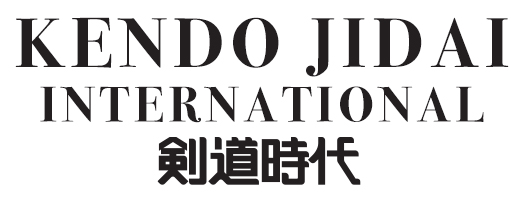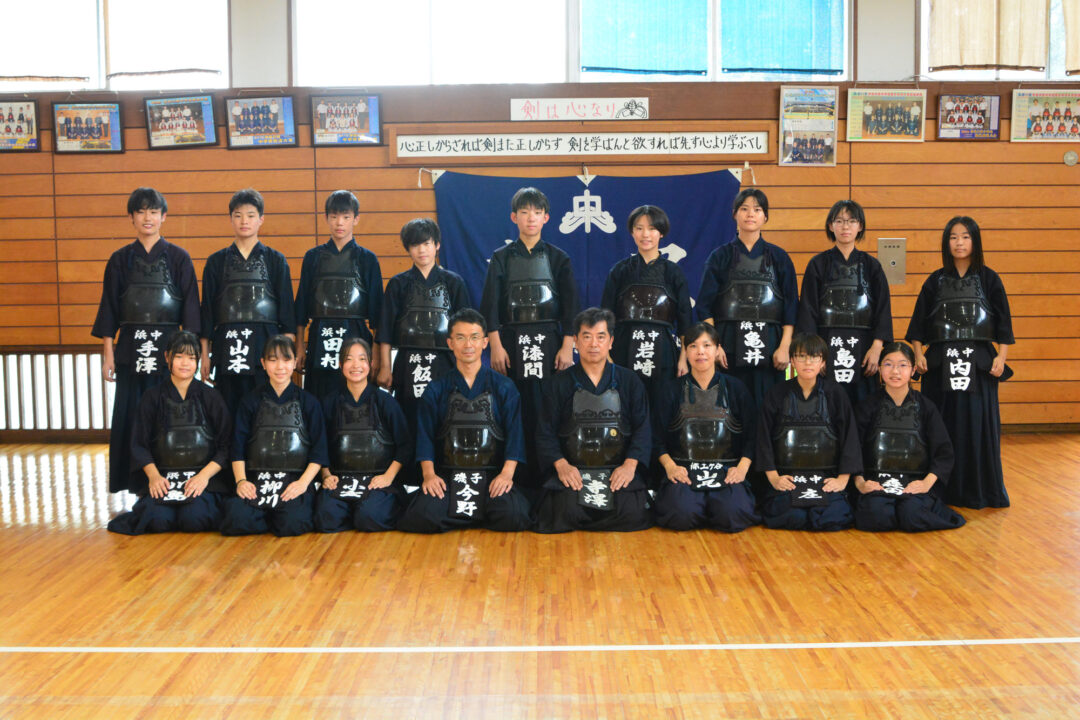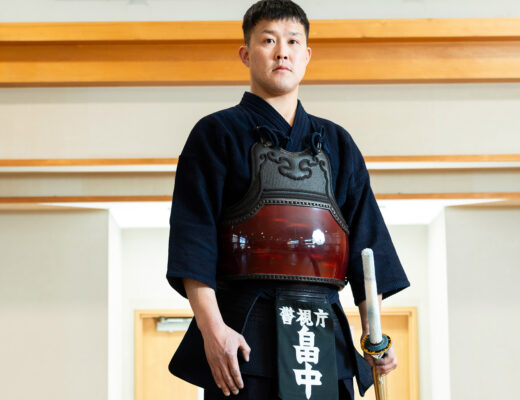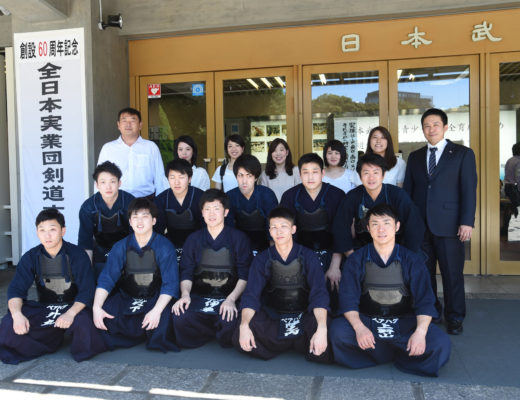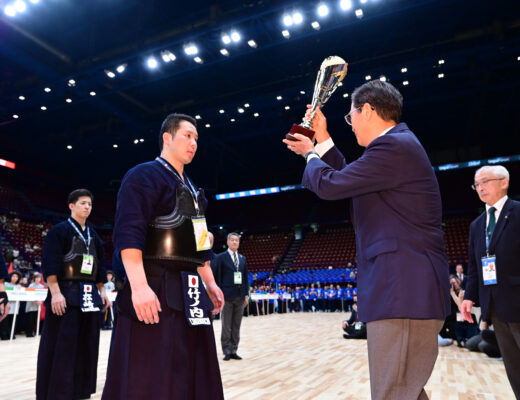2024.12 KENDOJIDAI
Interview by: Yanagida Naoko
Translation by: Sato Mariko, Pepijn Boomgaard
At Hama Junior High School in Yokohama, there is an environment where beginner junior high school Kendo practitioners, who started Kendo through after-school club activities, can train with enthusiasm. Under the guidance of Terasawa Akira, Kyoshi 7th Dan (former teacher at the same school and external instructor), we learned the know-how for practicing Kendo in a supportive and encouraging manner.
Terasawa Akira (Kyoshi 7th Dan)
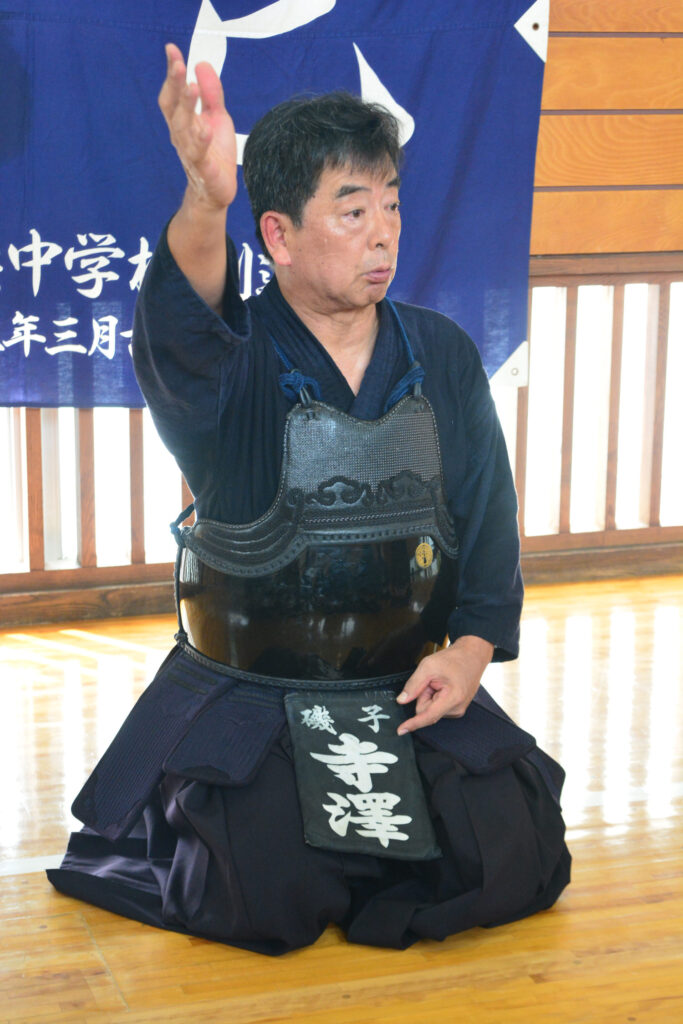
Terasawa Kyoshi, an alumnus of Hama Junior High School, became a junior high school teacher after graduating from Kokugakuin University. After retiring upon reaching the mandatory retirement age, with Hama Junior High School as his final post, he now serves as a club activity instructor at the same school.
Yamao Yoko (5th Dan)
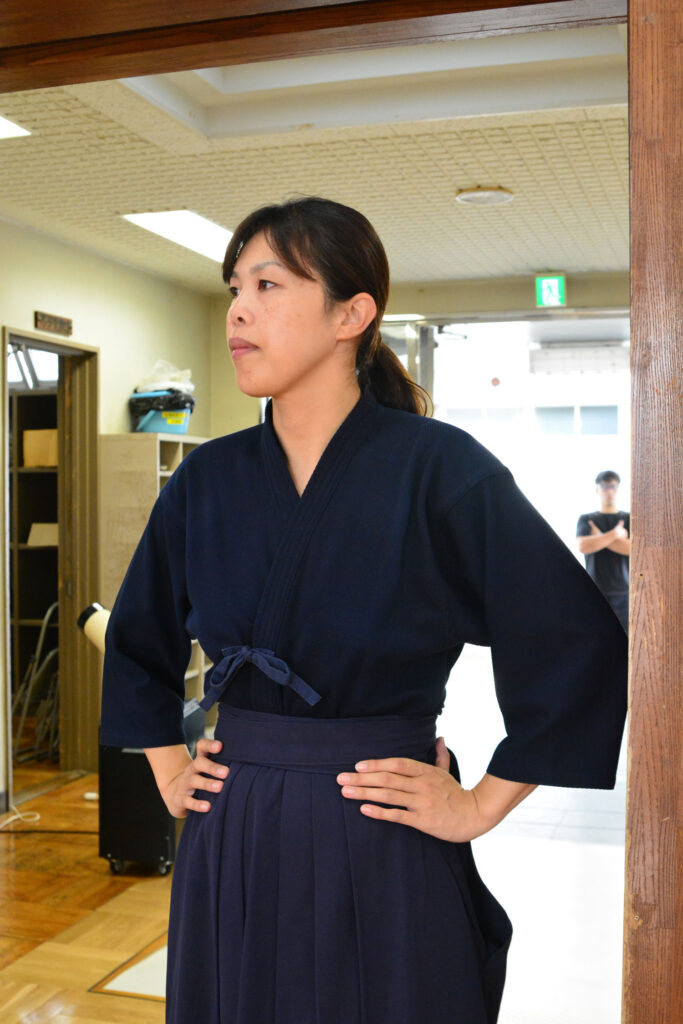
Now in her 10th year at Hama Junior High School. She won the All Japan Women’s Student Championship during her time at Saitama University.
“When it comes to training, Terasawa Sensei creates a structured plan, setting clear goals such as achieving ‘this level’ by ‘this tournament, and puts it into practice. He carefully considers how each student can improve individually. As coaches, our role is to support that process. In particular, we focus on fostering a strong team mindset.
We strive to create an environment where students can easily communicate with us. I believe that for a team with many beginners to succeed, ‘team strength’ is the key.”
Konno Yasushi (5th Dan)
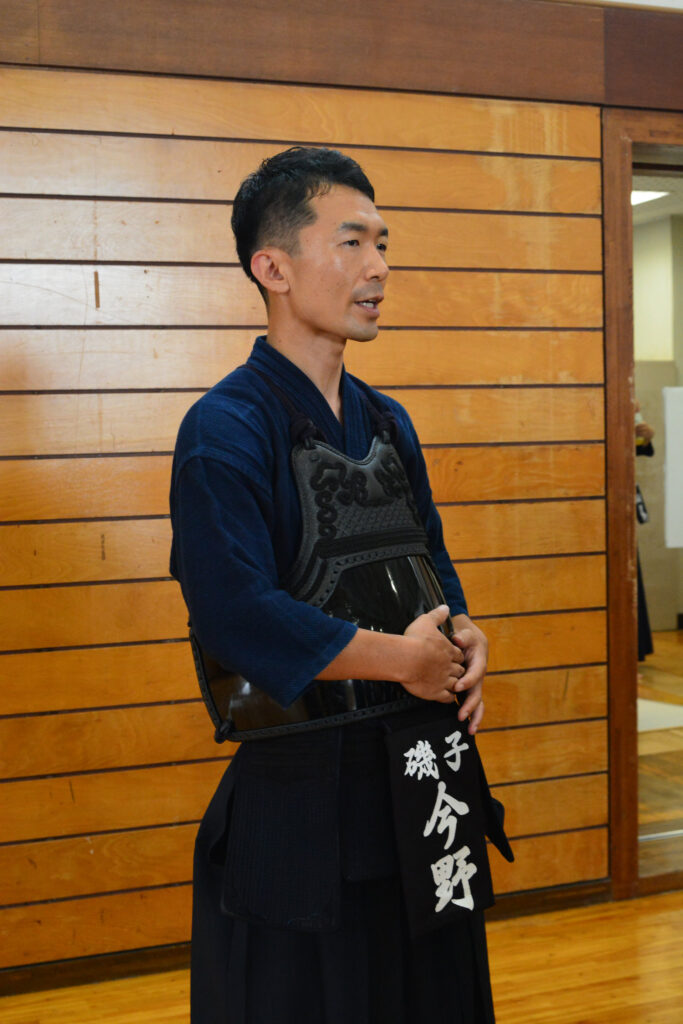
Now in his second year at Hama Junior High School. He practiced Kendo at a local dojo during his childhood. Alongside Yamao, he supports Terasawa Kyoshi in coaching the team.
“Every year, we have enough new members to form both boys’ and girls’ teams, as there is a steady number of students interested in joining. Many of the boys tend to move at their own pace, but I try to guide them towards becoming more proactive by making suggestions like, ‘Why not try it this way?’ Seeing students learn from their seniors’ actions and develop the mindset of ‘this is what I should do’ makes me realize how much they are growing as individuals.”
Enjoy Learning the Fundamentals of Kendo Over Three Years of Junior High School
Hama Junior High School, a public school in Yokohama, was founded shortly after World War II and serves students from the local Isogo Ward. While some Kendo club members have prior experience from local youth Kendo dojos, more than half of the new members each year are beginners.
Terasawa Kyoshi, an alumnus of Hama Junior High School, became a junior high school teacher in Yokohama after graduating from Kokugakuin University. Throughout his career, he coached Kendo teams at his assigned schools, successfully leading even beginner-heavy teams to compete in national and Kanto regional tournaments. He spent 12 years teaching at his alma mater, Hama Junior High School, which became his final post before retirement. Now in his third year as a club activity instructor under the new extracurricular activity system, he continues to guide the Kendo club.
“Hama Junior High School has been a strong school in Kendo. In fact, the school participated in the very first All Japan Junior High School Kendo Championship. At the time, I was a second-year student and not part of the team, but our third-year seniors won the prefectural tournament to qualify. However, after that, there was a long period when the school couldn’t even make it to the prefectural tournament. When I returned as a teacher, we worked together as a team, and despite being made up mostly of beginners, we managed to qualify for the prefectural tournament again.”
Currently, the third-year students consist of four boys and four girls, six of whom joined the club as complete beginners. Training is now primarily led by the first- and second-year students. The boys’ team has five members from the first and second years combined, including the second-year captain, Yamamoto, who has prior Kendo experience. Among the second-year girls, only one has experience, while four started as beginners. The first-year girls’ group consists of two experienced Kendo practitioners and two beginners.
Having been involved with the Hama Junior High School kendo club for nearly 20 years, the team has consistently qualified for the prefectural and Kanto regional tournaments.
“Our goal is to have students graduate with 2nd Dan. So far, every student has achieved this. They take the Shodan exam in the fall of their second year and the 2nd Dan exam in the fall of their third year. Since there is no official retirement from the club, we always keep the doors open for third-year students, even during their exam season, encouraging them by saying, ‘It’s okay if you come just once a week.’”
In the short span of two and a half years of club activities, the most important thing for Terasawa Kyoshi is building trust. “If the students believe that they will improve if they listen to a certain person or can trust what they say, communication deepens, and the intent behind my instruction is conveyed more effectively. When students feel a sense of accomplishment in grading exams or matches due to my coaching, it motivates them even more.”
He adds, “Experiencing success encourages them to think, ‘I want to give it another try,’ which makes them more willing to listen to instruction. However, if they don’t understand the purpose behind the guidance, they struggle to improve, so I make sure to be mindful of that as well.”
For first-year students who have just entered the school, Terasawa Kyoshi intentionally refrains from providing direct instruction. Instead, he encourages them to learn by observing their senior teammates or receiving guidance from them.
“During the trial membership period, I ask the senior students, ‘Let the first-years practice Suburi, let them hold a Bokuto.’ The upperclassmen take the lead in Suburi practice. Once they officially join the club, we have training groups consisting of one first-year, one second-year, and one third-year student. I tell the second- and third-year students, ‘Just teach what you’ve learned,’ and I instruct the beginners to ‘start by imitating others.’ I emphasize two key points: even if they can’t do it perfectly yet, they should first try to copy their seniors and always use a strong voice.”
For beginner students, he also ensures that they start wearing the Men as soon as possible. If they spend too much time only practicing Suburi and footwork, they tend to lose interest.
“At a certain stage, we separate training sessions into two groups: one for second- and third-year students and another for beginners. This setup allows the senior students to reflect on their own weaknesses, making it a beneficial practice for both groups.”
When senior students give advice, they are instructed to keep it concise.
“If advice gets too long, it disrupts practice. So, I always tell them, ‘Just say it in one sentence.’ I also make a point of giving feedback actively and succinctly when I notice something.”
Helping students understand the purpose behind the instruction is a crucial part of their improvement.
“I always tell the students, ‘Understand what you need to do.’ I write about 30 to 40 Kendo newsletters each year, using them as a tool to communicate my coaching intentions. For example, in a recent issue, I reflected on the Block Tournament (the qualifiers for the prefectural tournament) and shared what we need to work on moving forward.”
When addressing the entire team, Terasawa Sensei directly calls out students who are not paying attention, saying, “Listen carefully.” Occasionally, he asks, “Do you know why I just said this?” which naturally encourages them to sit up straight and focus.
“I have never scolded a student simply for losing a match. However, if they lose because they kept retreating, I might get upset. What matters is having discussions that lead to improvement. The goal is not just winning matches but persevering through these three years and earning a 2nd Dan rank. If I had to add one more thing, I’d say, ‘Winning a match can be fun, right?’ That’s the perspective we take.”
His words conveyed a strong desire for students to develop a genuine love for kendo.
Teachers Train Together – Leading by Example and Encouraging Imitation
The rest of this article is only available for Kendo Jidai International subscribers!
